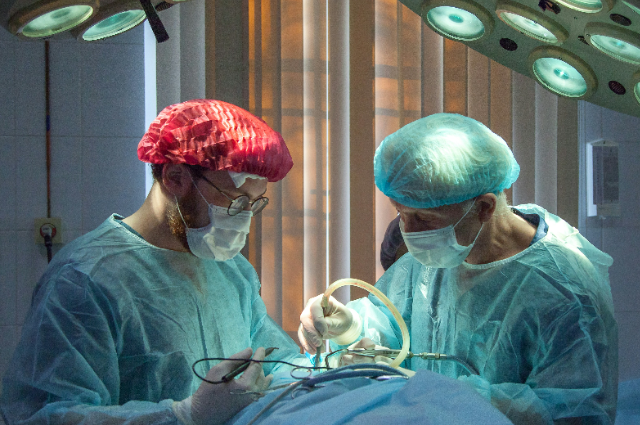
Photo by Olga Guryanova on Unsplash
New advancements in 3D printing technology have the potential to transform the treatment of cardiovascular diseases. Researchers have developed artificial blood vessels that closely mimic the characteristics of human veins. These 3D-printed vessels offer a promising alternative for heart bypass surgeries by aiming to enhance patient outcomes.
Strong and Flexible Tubes
Experts have designed robust and flexible gel-like tubes using a novel 3D printing method. These synthetic vessels could replace the traditional artificial and human veins used in heart bypass operations. By redirecting blood flow more effectively, they hold the promise of significantly improving surgical results for patients.
Addressing Surgical Complications
One of the significant benefits of these synthetic vessels is the potential to reduce complications associated with heart bypass surgeries. Annually, about 20,000 such operations are performed in England alone, often involving the removal of human veins. This procedure can lead to scarring, pain, and infection. The newly developed 3D-printed vessels could minimize these risks and provide more seamless integration into the body compared to small synthetic grafts which often face challenges in functionality and acceptance by the body.
Innovative Manufacturing Process
The creation of these artificial blood vessels involves a sophisticated two-stage process. Researchers from the University of Edinburgh's School of Engineering utilized a rotating spindle integrated with a 3D printer to produce tubular grafts from a water-based gel. This process was followed by electrospinning, a technique that uses high voltage to create very thin nanofibers. These fibres were then used to coat the artificial blood vessel with biodegradable polyester molecules that resulted in a product as strong as natural blood vessels.
Versatile and Adaptable Design
The 3D-printed grafts can be manufactured in various thicknesses ranging from 1 to 40 millimetres in diameter. This versatility makes them suitable for a wide range of applications. Their flexibility ensures that they can be easily integrated into the human body, making them a highly adaptable solution for different medical needs.
Future Research and Trials
The next phase of this groundbreaking study will focus on testing the use of these artificial blood vessels in animal models. This research will be conducted in collaboration with the University of Edinburgh's Roslin Institute. Following successful animal trials, the team plans to move forward with human trials to further evaluate the efficacy and safety of the 3D-printed vessels.
Collaboration and Publication
This innovative research was carried out in partnership with Heriot-Watt University and has been published in the journal Advanced Materials Technologies. The collaboration emphasizes the potential of interdisciplinary efforts in advancing medical technologies and improving patient care in cardiovascular treatments.
Dr. Faraz Fazal from the University of Edinburgh's School of Engineering, who led the research believes that their new method for creating tube-shaped structures has the potential to revolutionize the field of tissue engineering. This means it could lead to significant advancements in creating artificial tissues.
Dr. Norbert Radacsi, also from the University of Edinburgh's School of Engineering and the main researcher on the project, states that their findings have solved a long-standing problem in the development of artificial blood vessels. They have successfully created an artificial blood vessel that behaves and functions very similarly to a human vein.
Dr. Radacsi is optimistic about the future and believes that with continued support and teamwork, they can develop improved treatments for patients suffering from heart and blood vessel diseases.
Battling India's Growing Cardiac Disease Burden
As India grapples with a rising flow of heart diseases, medical professionals are increasingly turning to cutting-edge technologies to enhance patient outcomes. With one in four deaths in India attributed to heart-related issues, the urgency to innovate is evident. Notably, stroke and coronary artery disease are responsible for over 80% of these fatalities.
Embracing New Technologies in Cardiac Care
In response to this critical health challenge, innovative approaches are making their way into cardiac care by aiming to improve heart health and patient outcomes. Leading the charge, the top cardiology hospital in Coimbatore is connecting advanced technologies to deliver premier heart health services.
Artificial Intelligence in Cardiac Diagnostics
One area where technology is making a significant impact is cardiology, particularly through the integration of artificial intelligence (AI) in diagnostics. Over recent years, AI has become an irreplaceable tool in identifying heart-related conditions with greater accuracy and efficiency.
Human eyes can sometimes overlook minute details in medical imaging. AI, however, excels in analyzing large volumes of data, such as MRIs, to detect subtle patterns and irregularities that might be missed by human observers. This not only accelerates the diagnostic process but also enhances the precision of cardiac assessments.
Robotic Assistance in Cardiac Surgery
Another promising technological advancement is the use of robotic assistance in heart surgery. This technology is gaining traction in the medical field, offering surgeons increased flexibility and precision. Robotic-assisted surgeries allow for the execution of complex cardiac procedures with fewer openings, which translates to less invasive operations.
The benefits of this approach are significant. Patients experience better surgical outcomes and shorter recovery times. Although robotic-assisted surgery is still in its developmental stages, its potential to revolutionize cardiac care is huge.
In conclusion, as India faces a mounting cardiac disease burden, the integration of advanced technologies like artificial intelligence and robotic assistance in cardiac care is pivotal. These innovations hold the promise of improving diagnostic accuracy, surgical precision and overall patient outcomes by paving the way for a healthier future.
. . .
References:
